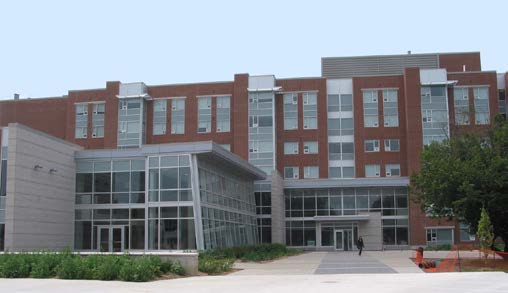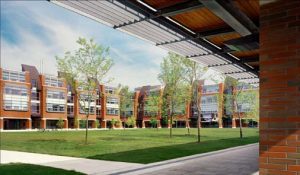Climate Considerations

Brandon University, like many universities across Canada, has the greatest number of users primarily in the colder months of the year. As such, the design of buildings must consider creating comfortable, walkable environments to mitigate the cold and wind, and also to enable the visual experience of the colder seasons. The warmer seasons also need to be considered such that the campus can be enjoyed during hot and rainy seasons. The design of buildings – scale, massing, height, orientation, materiality, and transparency play a key role in creating comfortable interior and exterior pedestrian environments throughout the year. In addition, the Plan encourages indoor-outdoor pedestrian circulation as a means of creating a healthy campus environment.
Policies:
- Buildings should be designed to allow for maximum sunlight in the interior of buildings.
-
Provide canopies at grade fronting streets and along pedestrian passageways to protect from rain, snow, and sun conditions.
- Avoid the adverse affect of shade and shadowing of open spaces that make spaces uncomfortable.
- Locate entrances in close proximity to each other to allow for short distances between internal and external movement during colder seasons.
- Avoid the use of upper level pedway connections between buildings. This inhibits the socialization and animation of the campus at the ground level.
- If building connections are deemed necessary, they should be located at grade and should be open, bright, and transparent to allow for the visual experience of the outdoors and the orientation of place.
- Design internal pedestrian corridors along the building edges to allow for the visual experience of the outdoors and the orientation of place. Social gathering spaces and study spaces should be located accordingly.
- Set back niches within south-facing building façades to create “sun traps”, places that capture optimal sun exposure.
- When using tall building heights, design narrow towers to maximize solar penetration.
- Provide heated shelters and warming huts as places of respite from the cold, particularly for waiting areas such as in front of transit stops.
- Design buildings with breaks in frontages to provide shelter from the wind.
- Internally, maximize solar access through roof orientation, transparency, and the use of light wells.

